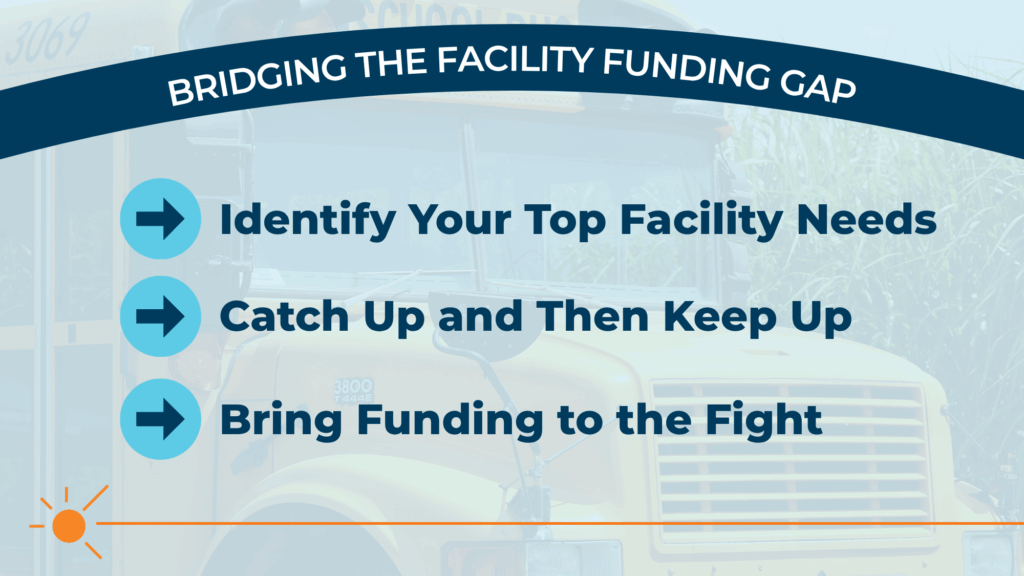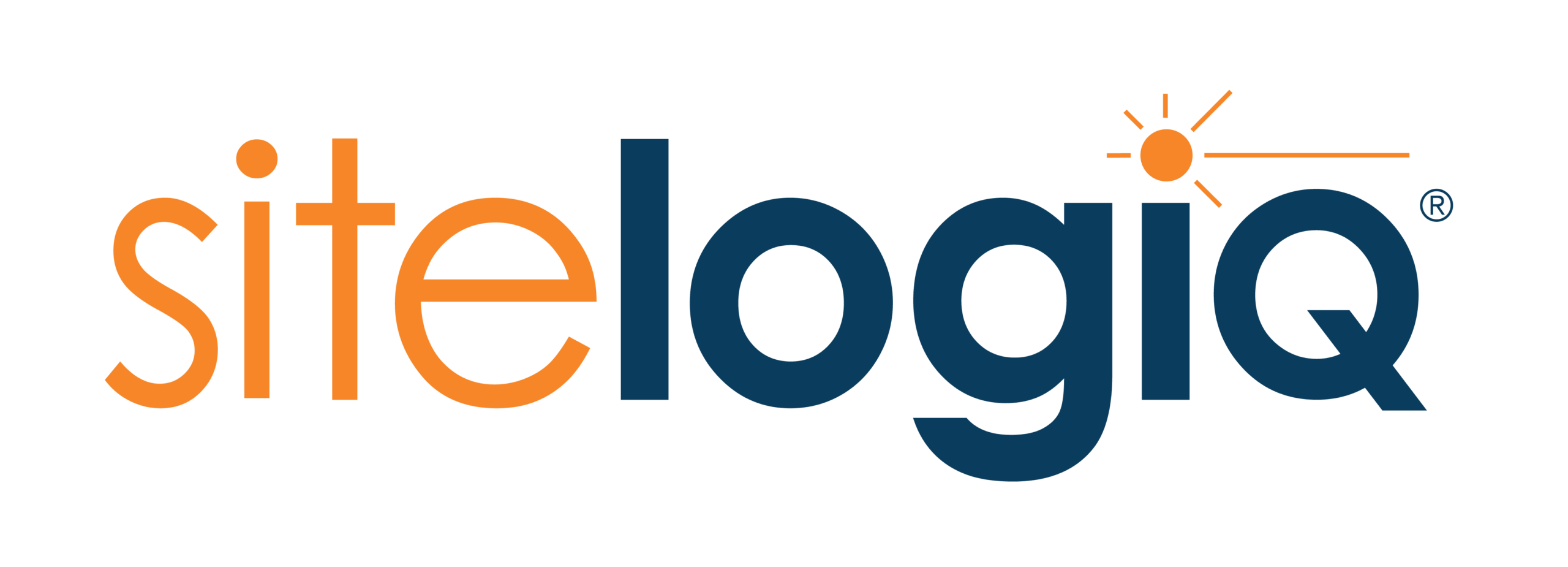

The American Society of Civil Engineers (ASCE) estimates that deferred maintenance in U.S. K-12 public schools totals around $500 billion. This backlog includes essential repairs and updates to school buildings and facilities.
The facility funding gap refers to the difference between financial resources available to public schools for maintaining, repairing, and upgrading their buildings, and the actual amount needed to ensure they’re safe, conducive to learning, and meet community needs. The school facility funding gap highlights the shortfall in funding that many K-12 districts experience, and it is negatively impacting the quality of education provided and overall well-being of students and staff.
The educational standard for school district facility spend is $195 billion per year, however, districts only spend around $110 billion – leaving a $85 billion gap to make critical facility improvements.
Best practice for facility maintenance spending suggests districts should budget between 2% – 4% of the facility’s current replacement value:
- 2% if the district is keeping up with asset replacement and modernization
- 4% if the district is behind and has a high level of deferred maintenance
The rise of the nation’s K-12 facility funding gap has been brought on by increased school construction costs, increased building inventory, and a sharp decline in facility expenditures after the Great Recession. Collectively, we have our work cut out for us.
Impact on Student Performance
The school funding gap leaves many districts fighting deferred maintenance with failing systems that result in early dismissals, costly emergency repairs, school closures, and loss of learning hours.

According to a new report from Harvard T.H. Chan School of Public Health’s Healthy Buildings Program:
- A study of 75,000 high school students in New York City found that students were 12.3% more likely to fail an exam on a 90°F day versus a 75°F day.
- Poor ventilation in schools was associated with student fatigue, lower attention span, and loss of concentration.
- In a study of 500 8–9-year-olds, test scores were 5.5 points lower for each decibel increase in classroom noise.
Students focus better when they’re comfortable, are more likely to attend classes, and may be less likely to become ill. These qualities all come from classrooms that have proper ventilation, are well-lit, and maintain efficient cleaning schedules. Students who aren’t distracted or uncomfortable due to environmental factors are students who can remain attentive and better retain information.
By not addressing deferred maintenance – including outdated and inefficient HVAC, lighting, and other building systems – your students’ health, safety, and performance can suffer. It’s critical for districts to properly plan to tackle deferred maintenance, moving from a reactive to a proactive approach to facility maintenance.
How to Catch Up and Keep Up
From deteriorating buildings, outdated infrastructure, and severely stretched resources – neglecting to establish a capital plan for your organization’s facilities can negatively impact the health and safety of occupants.
Enter master facility planning, also often referred to as a capital plan, as a strategic approach to optimizing asset management. This comprehensive method of facility planning and maintenance helps to uncover critical needs, identify inefficiencies, and prioritize maintenance improvements. School facilities in good condition can help reduce absenteeism, improve test scores, improve teacher retention rates, and increase district retention and attraction of students and families.
A master facility plan should include your school’s vision and facility goals; a recent facility condition assessment with benchmarks; design and development for facility improvements; and a detailed plan for how you will implement and fund those improvements.
Struggling with getting started? See our expert recommendations in Smarter Facility Capital Planning, the top 4 things to include in your master facility plan.
With your master facility plan created and implemented, you can begin to catch up on your deferred maintenance, focusing on the most critical projects. The plan should be updated annually, helping you keep up with your facility maintenance and create a warm, safe, and dry environment for students and staff. By catching up and keeping up with your facility needs and maintenance, school districts can build trust, transparency, and teamwork with their staff, students, board, and community.
Bringing Funding to the Fight
As a space for both education and personal growth, your school’s learning environment may require upgrades. However, with tight budgets, funding for these types of infrastructure projects has often been limited. There are various funding strategies and options to help school districts bring funding to the fight as deferred maintenance is tackled.
- Guaranteed Energy Savings Agreement (GESA): A GESA is a vehicle to decrease growing utility costs with a progressive contracting process that enables mass upgrades of building components such as lighting, HVAC, and water, among others to be replaced through a budget-neutral process. These upgrades play an important role in significantly reducing energy usage, which results in decreased utility spending to operate the project.
- Energy as a Service (EaaS): EaaS payments are based on a measured quantity of energy (kilowatt-hours of electricity) saved. This enables you to treat energy efficiency as a resource to fund facility improvements and eliminate costly maintenance associated with outdated equipment. An EaaS agreement typically covers project costs and ongoing performance risk including full-service maintenance and monitoring.
- Utility Rebates and Incentives: At SitelogIQ, our team is continually searching for and monitoring available utility rebates and incentives to help offset energy project costs for our customers. Understanding the nuances of how the incentive programs operate and requirements to ensure our projects qualify for the maximum incentives is part of the value offered by our team.
- State and Federal Grants: SitelogIQ prides itself on helping our customers find and manage alternative ways to fund projects. We have experience writing grants and advocating for their award. Our team assists with identifying funding strategies, grant writing, application and documentation verification, and post-award administration to ensure compliance, support progress reporting, and assist with appropriate grant close-out documentation.
SitelogIQ’s team of project financing experts can guide you on all available financing options for your specific project type and work with your team throughout your project’s development to secure the necessary funds to get started.

Through a partnership with SitelogIQ, we will collaborate to identify, prioritize, and address your organization’s specific building needs and form and execute a thorough long-term strategy with our proven capacity to deliver a return on your investment. This strategic guidance can help you upgrade existing facilities to create and maintain resilient and future-ready spaces to meet occupant needs.
mySiteIQ, our technology-enabled platform, can also help you easily organize your facility assets and data, prioritize short- and long-term projects by constructing and comparing scenarios, and optimize your facility’s performance to ensure efficient projects.
Contact us today to develop a plan to tackle deferred maintenance with funding opportunities, creating a safer, healthier, and more sustainable space for your occupants and community.


